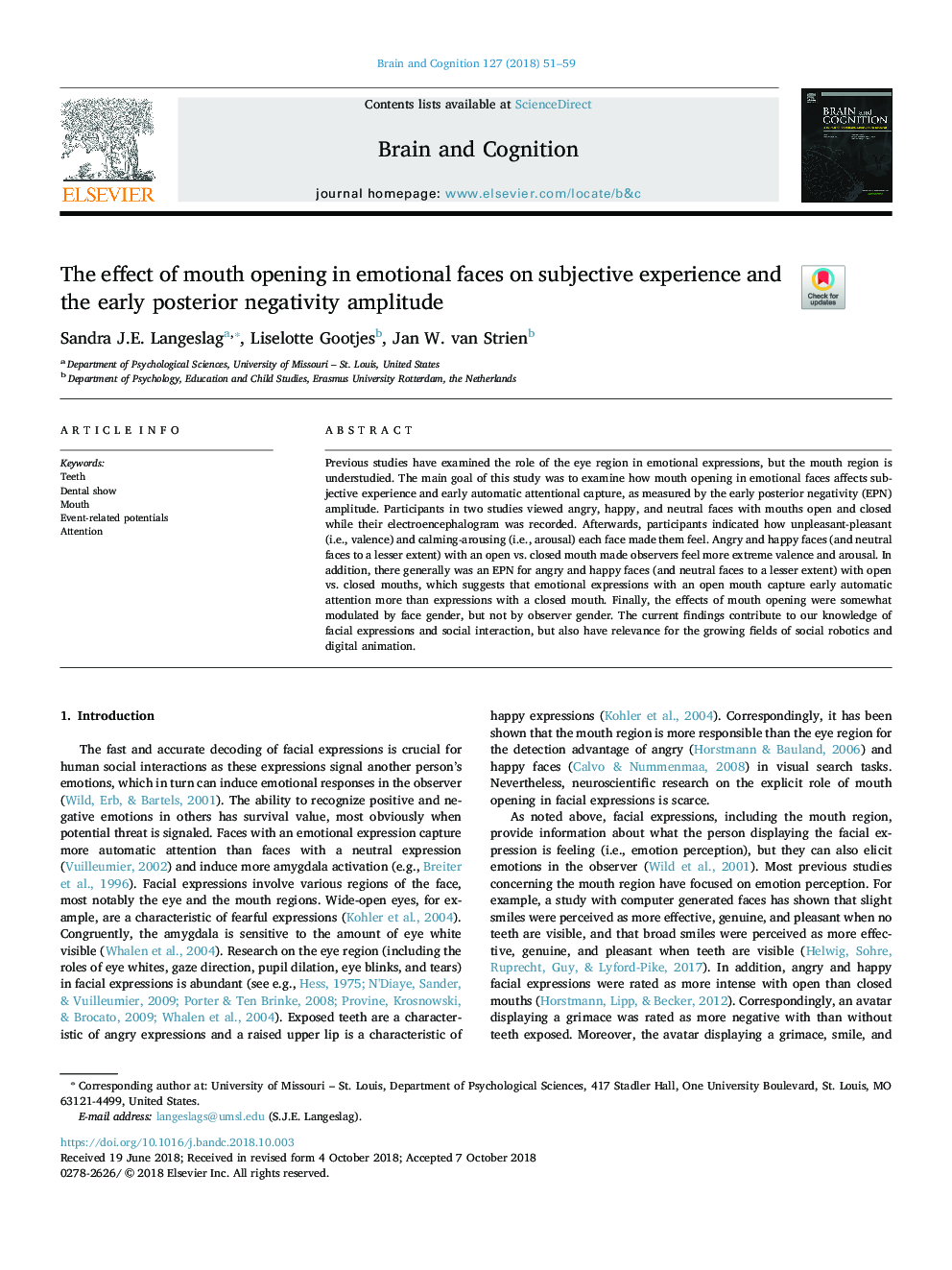| Article ID | Journal | Published Year | Pages | File Type |
|---|---|---|---|---|
| 11031380 | Brain and Cognition | 2018 | 9 Pages |
Abstract
Previous studies have examined the role of the eye region in emotional expressions, but the mouth region is understudied. The main goal of this study was to examine how mouth opening in emotional faces affects subjective experience and early automatic attentional capture, as measured by the early posterior negativity (EPN) amplitude. Participants in two studies viewed angry, happy, and neutral faces with mouths open and closed while their electroencephalogram was recorded. Afterwards, participants indicated how unpleasant-pleasant (i.e., valence) and calming-arousing (i.e., arousal) each face made them feel. Angry and happy faces (and neutral faces to a lesser extent) with an open vs. closed mouth made observers feel more extreme valence and arousal. In addition, there generally was an EPN for angry and happy faces (and neutral faces to a lesser extent) with open vs. closed mouths, which suggests that emotional expressions with an open mouth capture early automatic attention more than expressions with a closed mouth. Finally, the effects of mouth opening were somewhat modulated by face gender, but not by observer gender. The current findings contribute to our knowledge of facial expressions and social interaction, but also have relevance for the growing fields of social robotics and digital animation.
Related Topics
Life Sciences
Neuroscience
Cognitive Neuroscience
Authors
Sandra J.E. Langeslag, Liselotte Gootjes, Jan W. van Strien,
